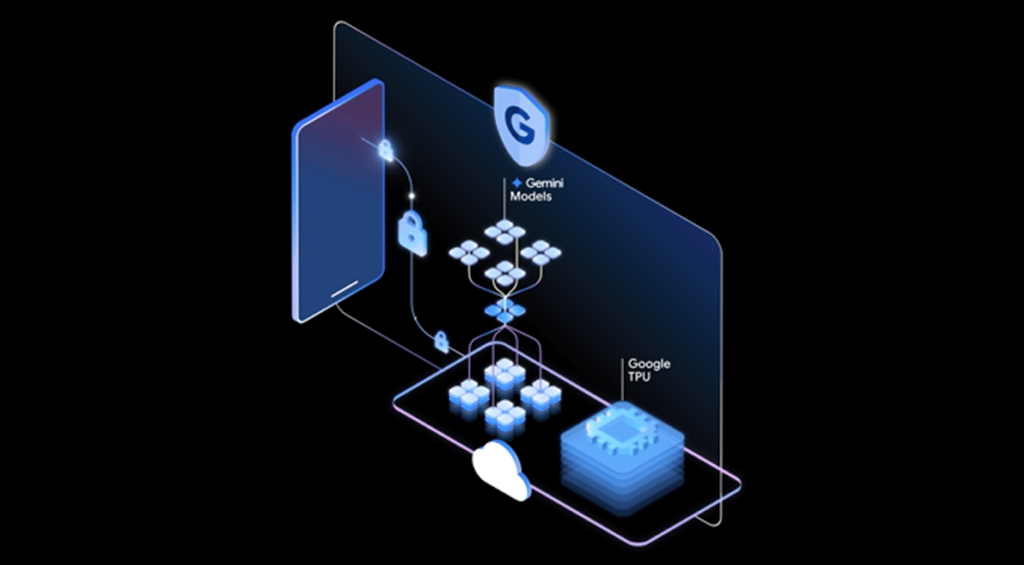Datamation content and product recommendations are
editorially independent. We may make money when you click on links
to our partners.
Learn More
Enterprises are getting the message when it comes to cloud computing – get on board. While few may be engaging in an outright full move away from a traditional on-premise datacenter to off-premise cloud computing, the so-called hybrid cloud strategy is gaining in popularity.
A recent survey by cloud management company Rightscale of organizations with at least 1,000 employees showed that a whopping 95 percent already have a hybrid cloud strategy that involves moving at least some business applications and data to both public and private environments
Cloud Storage and Backup Benefits
Protecting your company’s data is critical. Cloud storage with automated backup is scalable, flexible and provides peace of mind. Cobalt Iron’s enterprise-grade backup and recovery solution is known for its hands-free automation and reliability, at a lower cost. Cloud backup that just works.
SCHEDULE FREE CONSULT/DEMO
“Traditional on-premise computing is just not financially competitive with the cloud,” analyst Rob Enderle told Datamation. Whereas the datacenter requires companies to anticipate and pay ahead for hardware they expect to need (potentially over-buying in the process), he notes that cloud services are essentially priced pay-as-you-go for what you need.
Security is still a concern when it comes to the cloud, but Enderle says those objections are fading. “With an intelligent approach, the right policies and careful planning, public cloud services can be leveraged to provide the same level of control and security as on-premise offers,” he said.
Ah, but there’s the rub. Cloud services are in such demand, line of business and department managers have been known to sign up without IT’s approval. In some cases, Enderle says these ad hoc cloud deployments are only discovered because seeing the word “Amazon” in an invoice leads the accounting department to question the purchase (confusing Amazon Web Services with the consumer products Amazon sells).
As IT moves to get a better handle of what the company’s cloud strategy should be, it’s important to remember that you can’t manage what you don’t know you have. Therefore, rule number one in developing your hybrid cloud strategy is to make an accounting of what you already have. “If you don’t do an audit first to see what you have, that’s suicide. You have to do that,” says Enderle.
While specific departments or say a DevOps group within a company may be benefiting from a cloud service, it makes a lot more sense for IT to get involved and have a bigger picture of what’s going on. If, for example, multiple departments have their own relationship with Salesforce, or Amazon or Box, they’re probably paying more than if the company had a larger overall licensing or group buy relationship.
Enderle also points out that these departments aren’t fully leveraging what the cloud has to offer. “How does your CEO keep track of this if he or she is out of the loop? And if you’re not integrating to the backend systems, you can’t get the analytics you need to improve the business,” he adds.
Intel has some thoughts
Perhaps there’s no greater indicator of how important the cloud has become: datacenter stalwart Intel is investing heavily in the cloud, specifically efforts by its partners and enterprise customers to leverage the benefits of a hybrid cloud strategy. Last year it announced a far-reaching Cloud for All initiative and has a Cloud Day media event set for later this month.
“We want to meet the needs of our customers regardless of where they deploy their workloads, whether that’s on-premise, colocation or with an (off-premise) tier one service provider,” Patrick Buddenbaum, General Manager of Enterprise IT & Workstations at Intel, told Datamation.
Buddenbaum says that all the major enterprise customers and Intel partners he knows of are at a minimum evaluating or putting in place a cloud strategy. “They have a traditional infrastructure already. Starting from there, there are two perspectives,” he said. “The first is to improve the efficiency of some of those workloads by moving them to the cloud over time. The second is looking at the cloud as a revenue-generating opportunity and build, for example, a greenfield cloud service for developers.”
When considering a move to the cloud, Buddenbaum says that, often, a key factor is how a company views IT. If IT is less of a core competency and more of a cost center that helps run the business, there may be more incentive to add cloud services for cost savings.
Still, he warns there are regulatory and compliance issues that need to be taken into account (back to Enderle’s point about careful planning) and what workloads you want to move off-premise. If you have some that need to run 24 x 7, like something that collects data from the shop floor, it may make more sense to keep those workloads on-premise versus what he says is typically a long migration process.
“There are so many considerations for bandwidth and the cost of storage that in some cases it can be more expensive to go to the cloud,” says Buddenbaum. “We have seen examples of companies that started with a great public cloud experience, but at some point decided it made more sense to repatriate and bring it all back on site.”
You can switch later, but here’s why to plan ahead
The major cloud vendors have made good progress on portability, giving customers the ability to move their data, apps and workloads back on-premise or even to another provider, though it can be a complicated process, particularly with large and diverse datasets.
“Think about an ERP system,” says Buddenbaum. “The longer it sits in a location, the more ancillary apps tie into it and it becomes like an octopus with many arms connected to various datasets and a real challenge to move.”
Data in the cloud has a lifecycle
There is also the question of data longevity or lifecycle. Fredrik Forslund, Director of Cloud and Datacenter Solutions at Blancco Technology Group, says it’s important to have the tools and processes to get rid of data that’s no longer needed. This could include customer records or employee records that are out of date and beyond any limit or a legal requirement to maintain them. BTG specializes in secure data erasure solutions.
“In a hybrid environment you have, for example, a virtualized computing environment that’s not 500 servers you control, but you have say 200 virtual machines spinning on a private cloud and 50 on a public cloud service and the data is moving back and forth. At some point in that lifecycle you have to make sure the data you don’t need any more is gone,” says Forslund.
That includes not only technology solutions, but a contract that addresses the need for data destruction.
“If you’ve moved for example to Amazon, it’s of vital importance you make sure your SLA (Service Level Agreement) will give you a guarantee that a process exists that the data can be removed,” says Forslund. That includes making sure the data being destroyed doesn’t live on in a backup system.
He points to the Cloud Security Alliance as an excellent resource for developing a data lifecycle strategy.
Enderle echoes a don’t-go-it-alone strategy because there is no need to reinvent the wheel. The major vendors already have a track record of working with enterprises on hybrid cloud strategy and know the pitfalls to avoid.
He also suggests where possible to add just one or as few cloud vendors as possible to keep things simple “so there’s only one throat to choke” to resolve any problems.
Photo courtesy of Shutterstock.
-
Huawei’s AI Update: Things Are Moving Faster Than We Think
FEATURE | By Rob Enderle,
December 04, 2020
-
Keeping Machine Learning Algorithms Honest in the ‘Ethics-First’ Era
ARTIFICIAL INTELLIGENCE | By Guest Author,
November 18, 2020
-
Key Trends in Chatbots and RPA
FEATURE | By Guest Author,
November 10, 2020
-
Top 10 AIOps Companies
FEATURE | By Samuel Greengard,
November 05, 2020
-
What is Text Analysis?
ARTIFICIAL INTELLIGENCE | By Guest Author,
November 02, 2020
-
How Intel’s Work With Autonomous Cars Could Redefine General Purpose AI
ARTIFICIAL INTELLIGENCE | By Rob Enderle,
October 29, 2020
-
Dell Technologies World: Weaving Together Human And Machine Interaction For AI And Robotics
ARTIFICIAL INTELLIGENCE | By Rob Enderle,
October 23, 2020
-
The Super Moderator, or How IBM Project Debater Could Save Social Media
FEATURE | By Rob Enderle,
October 16, 2020
-
Top 10 Chatbot Platforms
FEATURE | By Cynthia Harvey,
October 07, 2020
-
Finding a Career Path in AI
ARTIFICIAL INTELLIGENCE | By Guest Author,
October 05, 2020
-
CIOs Discuss the Promise of AI and Data Science
FEATURE | By Guest Author,
September 25, 2020
-
Microsoft Is Building An AI Product That Could Predict The Future
FEATURE | By Rob Enderle,
September 25, 2020
-
Top 10 Machine Learning Companies 2020
FEATURE | By Cynthia Harvey,
September 22, 2020
-
NVIDIA and ARM: Massively Changing The AI Landscape
ARTIFICIAL INTELLIGENCE | By Rob Enderle,
September 18, 2020
-
Continuous Intelligence: Expert Discussion [Video and Podcast]
ARTIFICIAL INTELLIGENCE | By James Maguire,
September 14, 2020
-
Artificial Intelligence: Governance and Ethics [Video]
ARTIFICIAL INTELLIGENCE | By James Maguire,
September 13, 2020
-
IBM Watson At The US Open: Showcasing The Power Of A Mature Enterprise-Class AI
FEATURE | By Rob Enderle,
September 11, 2020
-
Artificial Intelligence: Perception vs. Reality
FEATURE | By James Maguire,
September 09, 2020
-
Anticipating The Coming Wave Of AI Enhanced PCs
FEATURE | By Rob Enderle,
September 05, 2020
-
The Critical Nature Of IBM’s NLP (Natural Language Processing) Effort
ARTIFICIAL INTELLIGENCE | By Rob Enderle,
August 14, 2020
SEE ALL
CLOUD ARTICLES









